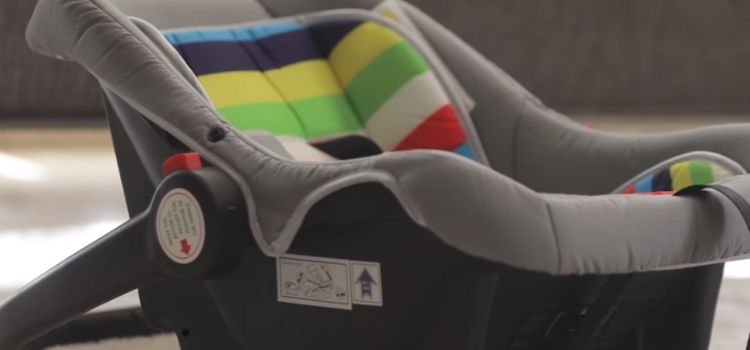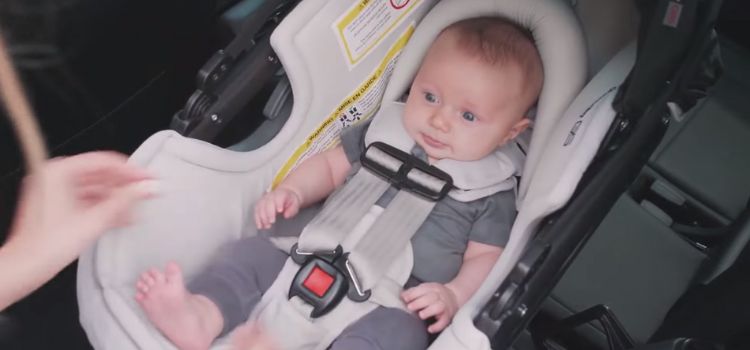As an Amazon Associate, I earn from qualifying purchases
Infant car seats are essential for parents, but they can take up a lot of space when not in use. This post will discuss ways to store your infant car seat to free up space in your home or vehicle. Whether you’re looking for temporary storage solutions or long-term options, we’ll cover everything you need to know. Let’s get started!
Clean the car seat.

Regularly cleaning your car seat is essential to maintain a safe and hygienic environment for your child. Start by removing the car seat cover and straps and following the manufacturer’s instructions for washing them. Use a gentle detergent and let them air dry before putting them back on the car seat.
Next, vacuum remove any crumbs, dirt, or debris from the car seat. You can also use a damp cloth and mild soap to wipe down the plastic and metal parts of the car seat. Be sure to thoroughly dry the car seat before reassembling it.
Consider using a fabric-safe stain remover or odour eliminator for any stubborn stains or odours. It’s important to regularly clean the car seat to ensure the safety and comfort of your child while travelling.
Remove the base and detach the carrier.

Start by locating the release button or latch on the car seat’s base. Press the button or release the latch to detach the carrier from the base. Be sure to follow the specific instructions provided by your car seat manufacturer to remove the base and separate the carrier correctly.
This may involve lifting or tilting the carrier to release it from the base. Once the carrier is detached, you can proceed with any necessary cleaning or maintenance of the base and carrier components. Always refer to the user manual for proper guidance on removing the base and detaching the carrier from your specific car seat model.
Fold the carrier if possible.

If your car seat carrier is designed to be folded, follow the specific instructions provided by the manufacturer to ensure that you fold it correctly. This may involve pushing buttons, pulling levers, or using other mechanisms to collapse the carrier into a more compact size for storage or travel.
Follow the manufacturer’s guidelines to avoid damaging the carrier or compromising its safety features. Once the carrier is folded, you can easily store it in a car trunk or closet, making it convenient for travel and storage. Always refer to the user manual for proper guidance on how to fold your specific car seat carrier model.
Store in a dry, cool place
To properly store your car seat carrier, it is essential to keep it in a dry, cool place. This will help to prevent any damage or deterioration of the materials. Follow the manufacturer’s guidelines for storing your specific car seat carrier model.
If the carrier is designed to be folded, follow the manufacturer’s instructions before storing it in a dry, cool place. This will help ensure the airline remains in good condition and is ready for future use.
Cover with a breathable cloth or bag.
Once the carrier is folded, you can easily store it in a car trunk or closet, making it convenient for travel and storage. Always refer to the user manual for proper guidance on how to fold your specific car seat carrier model. To properly store your car seat carrier, it is essential to keep it in a dry, cool place.
This will help to prevent any damage or deterioration of the materials. Follow the manufacturer’s guidelines for storing your specific car seat carrier model. If the carrier is designed to be folded, follow the manufacturer’s instructions before storing it in a dry, cool place.
This will help ensure the airline remains in good condition and is ready for future use. Covering the carrier with a breathable cloth or bag to protect it from dust and other environmental factors while in storage is also a good idea. This will help prolong the carrier’s life and keep it in good condition when you need to use it again.
Avoid storing in direct sunlight or extreme temperatures.
Exposure to direct sunlight can cause the materials of the car seat carrier to deteriorate and fade over time. Extreme hot and cold temperatures can also cause the materials to become brittle and prone to cracking. It is best to store the car seat carrier in a location shielded from direct sunlight and temperature extremes.
This will help to ensure that the airline remains in good condition for use in the future. Always follow the manufacturer’s guidelines for storing your specific car seat carrier model to ensure proper care and maintenance.
Check the manufacturer’s guidelines for specific storage instructions.
Before storing your car seat carrier, check the manufacturer’s guidelines for specific storage instructions. It is essential to follow these guidelines to ensure the airline remains in good condition for future use.
Additionally, consider covering the carrier with a breathable cloth or bag to protect it from dust and other environmental factors while in storage. This can help prolong the life of the airline. It’s also important to avoid storing the carrier in direct sunlight or extreme temperatures, as these can cause the materials to deteriorate and fade over time.
Following these storage guidelines will help ensure your car seat carrier remains in good condition and safe for future use. Always follow the manufacturer’s guidelines for storing your car seat carrier model.
Conclusion
Storing an infant car seat correctly is essential to ensure its safety and longevity. It’s best to keep it in a cool, dry place away from direct sunlight and extreme temperatures. Clean the seat before storing it, and avoid hanging it by the harness straps, which can cause damage. By following these tips, you can ensure your infant car seat is ready for safe and secure use when you need it again.
As an Amazon Associate, I earn from qualifying purchases
Leave a Reply